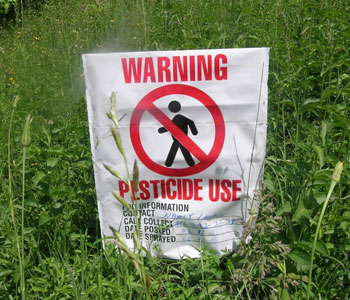Cotton farming is one of the United States’ biggest industries, raking in a total of about $25 million annually. Conventional cotton farming can attribute much of its success to the usage of pesticides, which endanger the very people who spray them. Pesticides also pose a threat to citizens in the communities surrounding conventional cotton farms, as they can easily seep into the water supply.

Side-effects of pesticide exposure include (but aren’t limited to) such lovely conditions as reproductive disorders, immune system deficiencies, and birth defects. Many pesticides (such as cyanide, dicofol, naled, propargite, and trifluralin) are considered some of the most toxic chemicals in the world, and are known carcinogens. Why would you want their remains littered throughout your clothing, sheets, or baby’s diapers?

Organic cotton is grown without the use of toxic pesticides, herbicides, or fertilizers, instead relying on safer and more environmentally-friendly methods like strategic weeding and the usage of beneficial insects. No toxic chemicals are sprayed over the crops of an organic cotton farm, which makes the conditions safer for farm workers, and protects the health of consumers who buy their products.
Gary Oldham, an organic cotton farmer since 1992, has this to say about the benefits of organic cotton:
“When you buy organic cotton, you’re supporting a lifestyle that benefits the land and prevents chemicals from entering the body. We need to leave something for the next generation,”
Gary was one of the original pioneers of an organic cotton industry that is now booming– but still faces fierce competition from conventionally-grown cotton. Approximately 3 million pounds of organic cotton are harvested annually, compared to 9 trillion pounds of conventional cotton. However, as the demand for organic cotton continues to rise, production will rise, and prices will decrease. Supporting organic cotton is beneficial in multiple ways, from improving your carbon footprint to promoting safe working conditions for farmers. Stay tuned for our next blog to find out the benefits of organic bamboo!






















